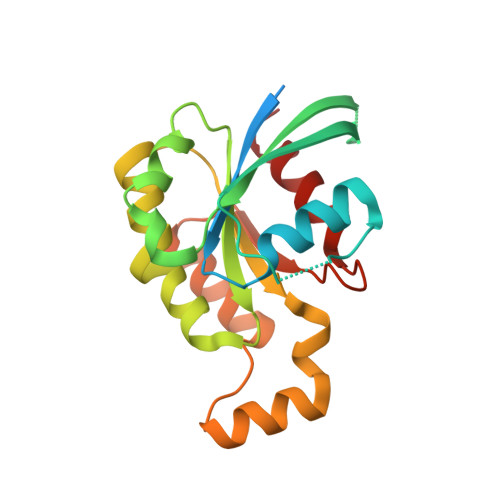RAC1P29S is a spontaneously activating cancer-associated GTPase.
Davis, M.J., Ha, B.H., Holman, E.C., Halaban, R., Schlessinger, J., Boggon, T.J.(2013) Proc Natl Acad Sci U S A 110: 912-917
- PubMed: 23284172
- DOI: https://doi.org/10.1073/pnas.1220895110
- Primary Citation of Related Structures:
4GZL, 4GZM - PubMed Abstract:
RAC1 is a small, Ras-related GTPase that was recently reported to harbor a recurrent UV-induced signature mutation in melanoma, resulting in substitution of P29 to serine (RAC1(P29S)), ranking this the third most frequently occurring gain-of-function mutation in melanoma. Although the Ras family GTPases are mutated in about 30% of all cancers, mutations in the Rho family GTPases have rarely been observed. In this study, we demonstrate that unlike oncogenic Ras proteins, which are primarily activated by mutations that eliminate GTPase activity, the activated melanoma RAC1(P29S) protein maintains intrinsic GTP hydrolysis and is spontaneously activated by substantially increased inherent GDP/GTP nucleotide exchange. Determination and comparison of crystal structures for activated RAC1 GTPases suggest that RAC1(F28L)--a known spontaneously activated RAC1 mutant--and RAC1(P29S) are self-activated in distinct fashions. Moreover, the mechanism of RAC1(P29S) and RAC1(F28L) activation differs from the common oncogenic mutations found in Ras-like GTPases that abrogate GTP hydrolysis. The melanoma RAC1(P29S) gain-of-function point mutation therefore represents a previously undescribed class of cancer-related GTPase activity.
- Department of Pharmacology, Yale University School of Medicine, New Haven, CT 06520, USA.
Organizational Affiliation:



















